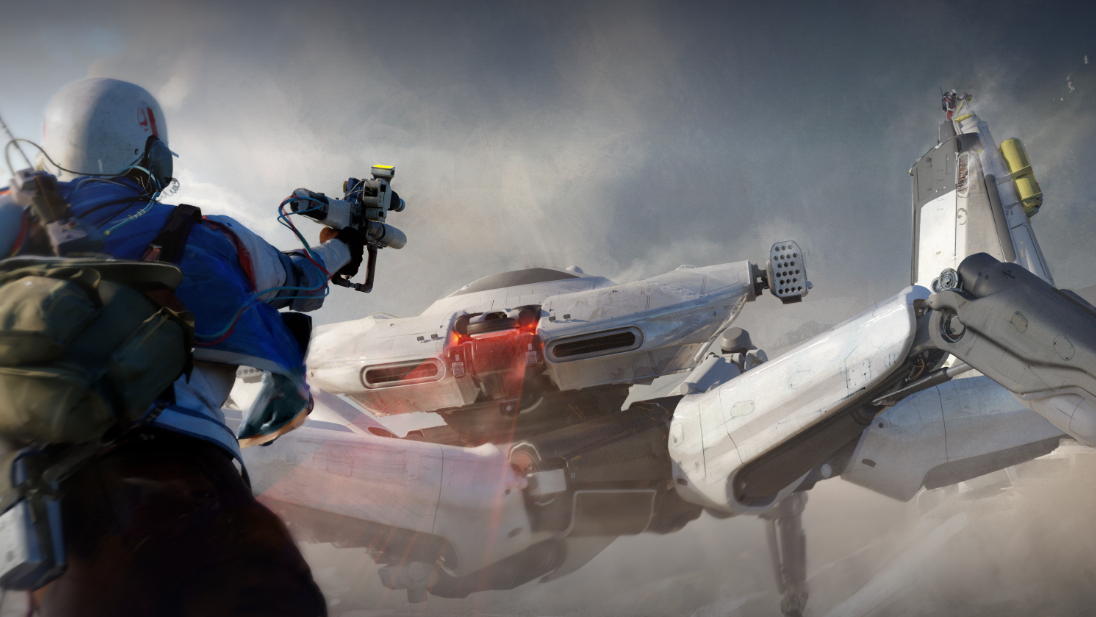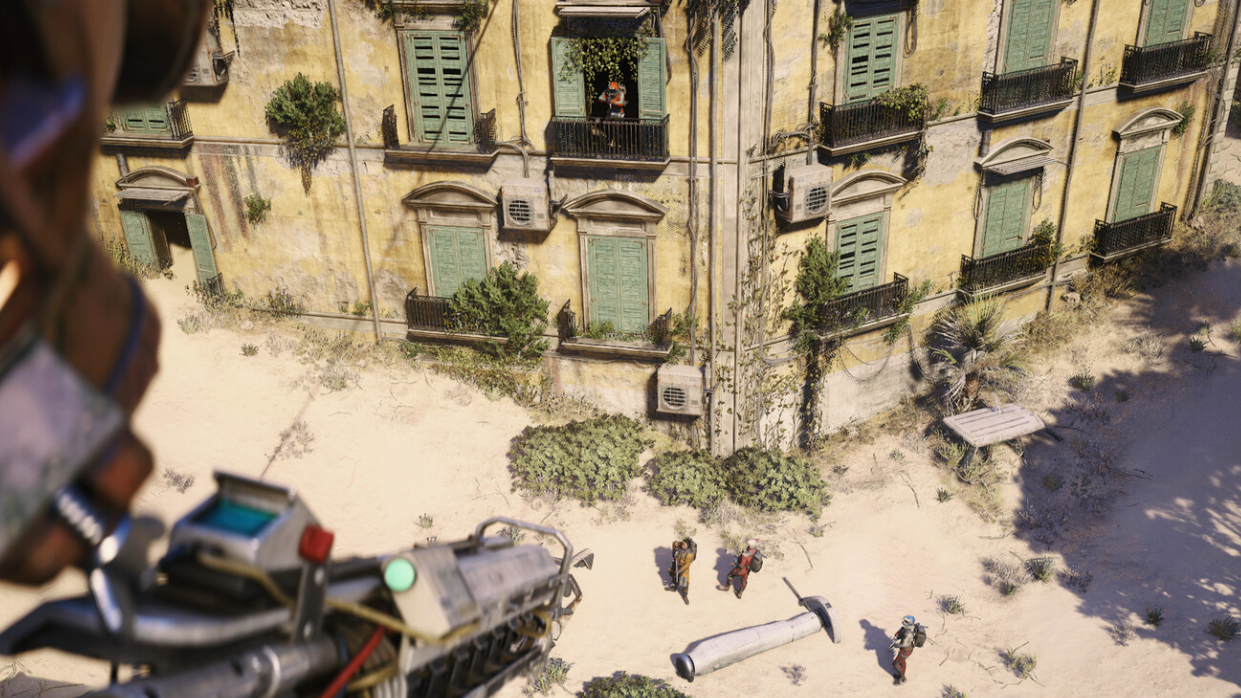Arc Raiders wears its premise on its sleeve: a world where machines have driven humanity underground. Under the hood, though, the game itself leans heavily on machine-driven tools. That mix of theme and toolset has turned Arc Raiders into one of the clearest flashpoints in the debate over AI in games.
Where Arc Raiders uses AI — and where it doesn’t
Embark Studios splits its AI tooling in Arc Raiders into two broad areas:
| Area | What AI does | What it does not do |
|---|---|---|
| Enemy animation & behavior | Reinforcement learning controls locomotion and reactions for multi-legged ARC drones, helping them navigate terrain and respond to players. | Does not generate art, models, textures, or level layouts. |
| Voices & audio | Text-to-speech (TTS) models trained on hired voice actors produce many in-game voice lines and player voice modulation. | Does not replace all acting; some scenes still use traditional recorded performances. |
On Arc Raiders’ Steam page, Embark flags the game as using “procedural- and AI-based tools to assist with content creation.” Design leadership has been explicit that the studio does not use “generative AI” for visual content. Instead, the standout applications are reinforcement learning for enemy movement and a machine-learned TTS system for voices.
AI-driven enemy movement in Arc Raiders
The ARC machines that stomp around the battlefield aren’t running on classic hand-authored animation trees alone. Embark uses reinforcement learning for locomotion and certain reactive behaviors, especially on the larger, multi-legged drones.
In practice that means:
- Movement is learned, not manually keyframed for every situation. The system is trained to prefer realistic, stable gaits and transitions.
- ARC units adapt to terrain and player positions with more fluidity — climbing over debris, reorienting when staggered, and navigating uneven surfaces.
- Designers still decide goals and constraints (where an enemy can go, what it should prioritize); the learning system fills in the “how it moves” details.
This style of animation tooling isn’t new in games. Earlier titles used related techniques under the catch‑all banner of “AI animation systems.” The difference in Arc Raiders is that reinforcement learning has matured enough to deliver more convincing, responsive giants in a networked extraction shooter, at scale.
For many players, this is the least controversial part of the game’s AI stack. It affects feel moment‑to‑moment, but it doesn’t raise obvious labor or authorship questions: no illustrators or 3D artists are being swapped out for text prompts here. The criticism comes almost entirely from elsewhere.

How Arc Raiders’ AI voices work
The game’s most debated decision is its use of machine-learned voices. Embark follows the same pattern that it previously used in The Finals:
- The studio hires and contracts human voice actors.
- Those actors record traditional performance lines and dedicated training material for a TTS model.
- The trained model can then generate additional lines in those actors’ voices without scheduling more studio sessions.
Design director Virgil Watkins has described how this feeds directly into gameplay systems. The clearest example is the ping and callout system: the model can speak “every single item name, every single location name, and compass directions” in the correct character voice. That’s essential for an extraction shooter with a constantly expanding loot pool and map vocabulary.
Embark also uses the same technology to modulate player voices. In proximity chat or team comms, you can have your real‑time speech transformed into one of multiple Raider voice presets. For players who dislike talking to strangers in their own voice, or who worry about harassment, that feature is a genuine draw.
Outside of these systems, Arc Raiders blends fully recorded scenes with generated lines. Traders, quest-givers, and other NPCs are where players most often notice the TTS: flat intonation, odd stresses, and that subtle “robot edge” that marks machine speech, especially when the script reads more like raw text than spoken dialogue.
Why Embark leans on TTS instead of only traditional VO
From the studio’s side, the argument is straightforward: modern live‑service games change too fast for conventional voice pipelines to keep up. Integrating VO is typically a multi‑month loop:
- Writers lock down lines for a feature or quest.
- Production prepares scripts, casting, and direction.
- Sessions are booked, often across multiple performers and time zones.
- Audio teams clean, edit, and implement the recordings.
Meanwhile, the design of an extraction shooter shifts weekly during development and after launch. Loot tables are adjusted, objectives move, encounter pacing gets tuned, and entire quest lines can be rewritten or cut. That misalignment between “slow” VO and “fast” gameplay iteration is exactly what Embark is trying to compress.
A trained TTS model lets the team:
- Generate revised lines in hours rather than rescheduling actors.
- Cover long-tail permutations (all item names, map sectors, and contextual callouts) that would be expensive and tedious to record by hand.
- Ship more voiced content in places where most games default to silent menus or text-only quest logs.
Embark’s public stance is that “making games without actors isn’t an end goal” and that TTS is reserved for specific contexts where flexibility and volume matter more than nuanced performance. The human acting that is recorded — especially for ensemble scenes — remains central to the studio’s narrative ambitions.
How players are reacting to AI voices in Arc Raiders
Players are split into noticeably distinct camps, and the lines generally fall between three positions: quality, ethics, and utility.
| Perspective | Core argument | Typical reaction to Arc Raiders |
|---|---|---|
| Quality-focused | AI voices sound “off” and undercut immersion compared to human performances. | Traders and quest NPCs are often called out as “robotic,” “monotone,” or “soulless,” even by players who like the rest of the game. |
| Ethics-focused | Normalizing TTS models trained on actors threatens long‑term voice-acting work and bargaining power. | Some avoid the game entirely or treat it as a cautionary example, regardless of whether actors were paid and consented. |
| Utility-focused | When actors are paid, AI‑assisted VO is just another production tool that can unlock new features. | Many players either don’t notice the AI or see it as an acceptable trade‑off for features like voiced pings and voice masking. |
On forums and social platforms, the most common complaints narrow in on the NPC delivery. Players describe “weird intonations,” lines that sound as though they’re being read exactly as written with no sense of conversational rhythm, and a general flatness that stands out next to the live banter of human teammates.
Others didn’t clock the AI at all until it was pointed out. For them, Arc Raiders’ standout qualities — encounter design, progression loop, co-op chaos — easily outweigh any irritation with merchant bark lines, even if they admit that some voices could be better.
There’s also a group that welcomes the player voice-modding outright. For people who avoid in-game voice chat because of anxiety, accent bias, or harassment, being able to “speak” as a Raider voice while still using natural speech rhythm feels like a meaningful accessibility and safety gain.
The labor and consent questions behind AI-trained voices
Arc Raiders also sits at the center of a broader industry argument: even if a studio’s implementation is relatively careful, does it still help normalize contracts and tools that will later be used in more exploitative ways?
The concrete facts in this case are:
- Embark hires voice actors and records them in a studio setting.
- Use of their voices in TTS systems is embedded directly in their contracts.
- Some actors are reportedly paid royalties or enhanced rates for this extended usage, though terms are not public.
The open questions — and they go far beyond this one game — are about power and precedent:
- If more studios require TTS rights to an actor’s voice for a flat fee, how much leverage will any individual performer really have to refuse?
- Will studios continue to pay for rich, one‑off performances when the cheaper option is to generate passable lines indefinitely from an existing model?
- What happens when catalogues of archived performances become training data that outlive the careers, or even the lives, of the actors who recorded them?
Some commentators look at Arc Raiders and see a relatively “ethical” application: clearly disclosed, with performers involved from the start, aimed at barks and utility lines rather than lead performances. Others argue that being a first-mover here is precisely the problem, because it helps normalize contract structures and expectations that will be far less generous once the practice is industry standard.
The irony built into Arc Raiders’ premise
All of this would be contentious in any modern live‑service shooter. In Arc Raiders, it’s impossible to ignore the thematic clash: a game explicitly about resisting dehumanizing machines that partially replaces human creative work with machine-driven tools.
Players emerge from underground to fight unfeeling robot harvesters, scrape together resources, and carve out space for human agency. Then they walk up to a key merchant or quest-giver and are greeted by a voice that many describe as lifeless or synthetic — one that exists only because a model can now stand in for a person who might otherwise have been hired again.
That contrast has become a focal point for critics who might otherwise have shrugged at a few synthetic barks in a sci‑fi shooter. The dissonance doesn’t come from a clever meta‑commentary inside the story; it comes from production choices around the story, choices that feel out of step with the game’s own emotional core.

Industry context: Nexon’s stance and the “AI by default” future
Arc Raiders is not an isolated experiment. Its publisher, Nexon, has been blunt about AI’s role in its business. CEO Junghun Lee has said players should assume that “every game company is now using AI,” and framed the key question as how studios will differentiate when everyone has access to roughly the same tools.
Elsewhere in the industry:
- Major publishers describe AI as the “core” of their future pipelines and reorganize around it, sometimes alongside mass layoffs.
- High‑profile creators talk openly about using generative tools to “fix” production bottlenecks, from QA to content authoring.
- A handful of holdouts, most notably Nintendo, publicly downplay or sidestep the current AI wave in favor of different directions.
In that landscape, Arc Raiders operates as a kind of proof point. It shows that a big-budget extraction shooter can ship with AI‑trained voices front-and-center, draw both backlash and praise, and still become a commercial success with millions of copies sold and hundreds of thousands of concurrent players.
For executives watching from other companies, the takeaway is unlikely to be “avoid AI voices.” It’s more likely to be: “You can use them if the game is good enough — just manage the messaging.” That’s exactly what worries players and developers who see each “acceptable” use as one more step toward normalization.
Arc Raiders sits in an uncomfortable middle ground. Its reinforcement learning for robotic enemies is a clear technical win that makes fights feel more dynamic. Its AI‑trained voices, on the other hand, solve real production problems and unlock clever features like voice-masked comms, but at a perceptible cost in performance quality and with long‑term implications for creative labor that the industry hasn’t fully worked through.
Whether you treat the game as an exciting case study in new tools or as a warning shot about where those tools can lead, it’s hard to pretend its use of AI is incidental. In a shooter about surviving a world run by machines, the machines are already in the booth.


